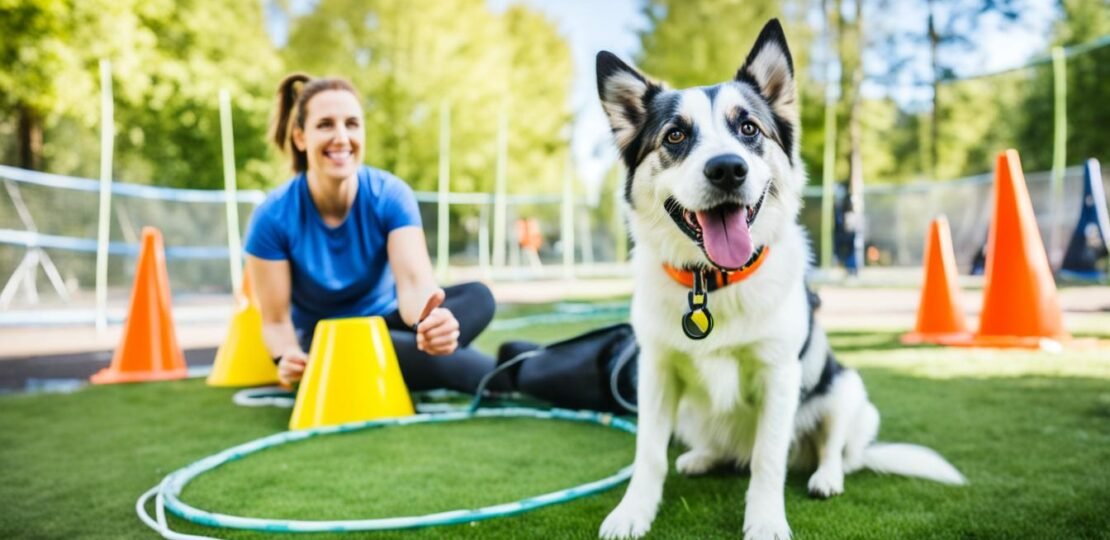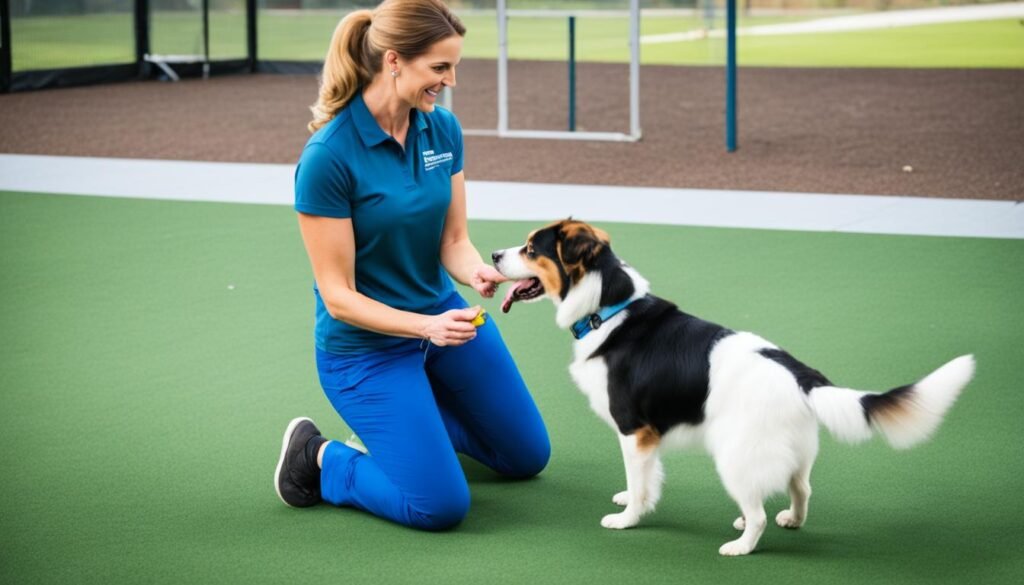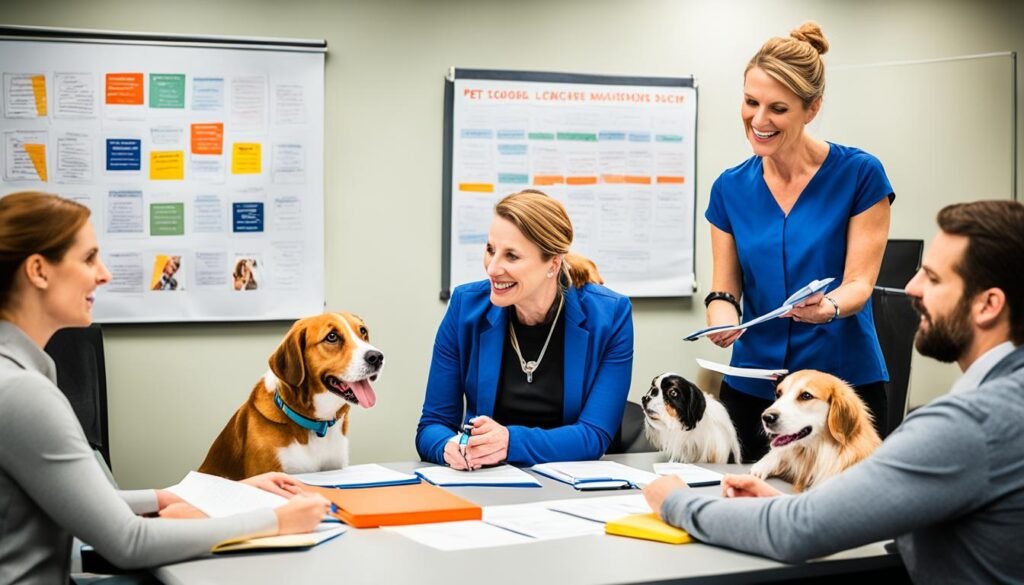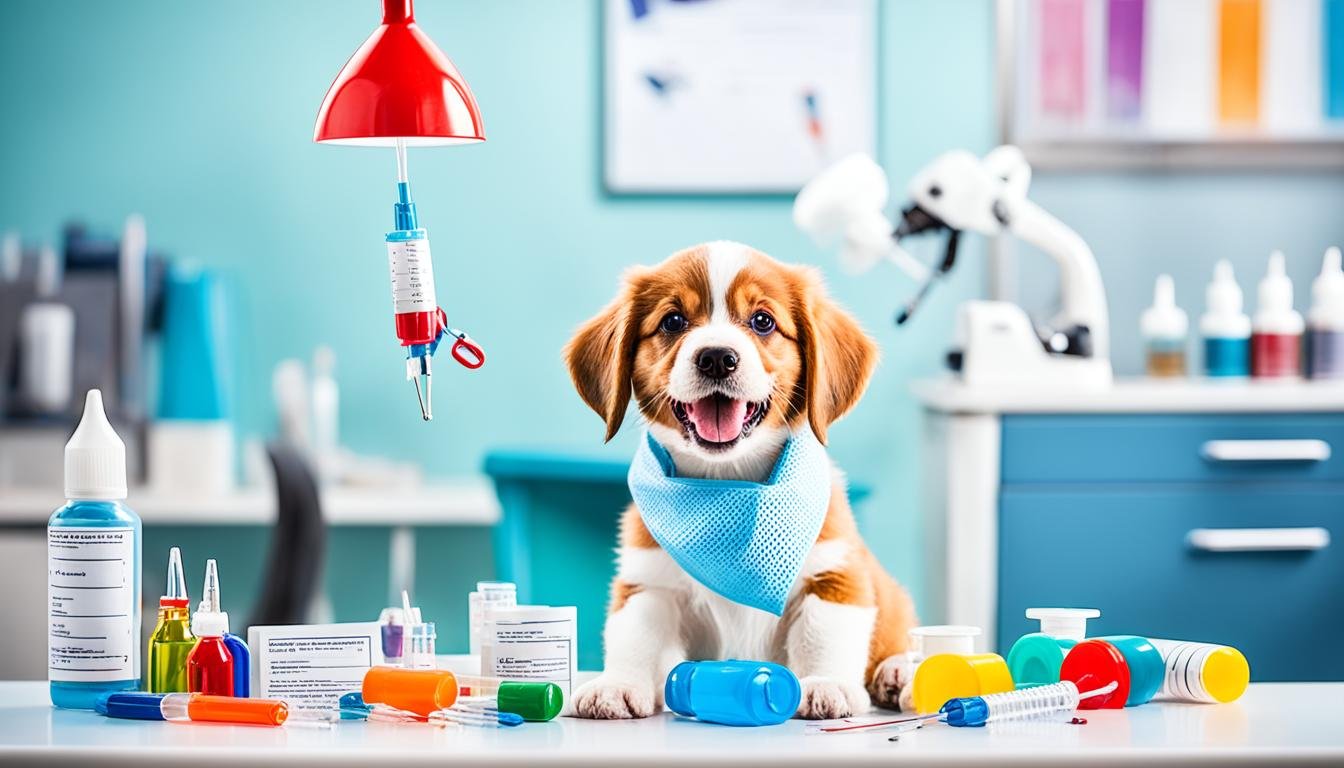
Welcome to our comprehensive guide on pet behavior training! If you have a furry friend at home, you know that their behavior plays a crucial role in creating a harmonious and enjoyable living environment. Whether you’re dealing with a mischievous pup or a wayward cat, proper training is essential. In this article, we’ll provide you with valuable tips and techniques to cultivate obedience and good manners in your pets.
At the heart of successful pet behavior training is effective communication and understanding. By establishing a strong bond with your pet, you can address their specific needs and modify their behavior in a positive way. From basic obedience commands to more advanced tricks, our tips and strategies will help you build a solid foundation with your pet.
Throughout this guide, we’ll explore various training methods, including positive reinforcement and clicker training, which have been proven to be effective in improving pet behavior. We’ll also discuss the role of professional pet behaviorists and how they can assist in addressing complex behavior issues.
Remember, training your pet is an ongoing process. Our aim is to provide you with the knowledge and tools to not only train your pet but also maintain their good behavior over time. So let’s get started and create a happy and well-behaved pet!
Understanding Pet Behavior
Before diving into training techniques, it’s essential to understand the behavior of your pet. By gaining insight into the common behaviors exhibited by dogs and cats, you can better address their specific training needs. Let’s explore the reasons behind certain actions displayed by our furry friends.
Common Dog Behaviors
Dogs exhibit various behaviors that can be influenced by factors such as breed, environment, and previous experiences. Understanding these behaviors is crucial for effective training. Here are some common dog behaviors:
- Barking
- Chewing
- Digging
- Jumping
- Aggression
- Separation anxiety
- Leash pulling
Common Cat Behaviors
Cats have their own unique set of behaviors that can sometimes be puzzling to their owners. By comprehending these behaviors, you can address any issues and create a harmonious environment for your feline companion. Here are some common cat behaviors:
- Scratching furniture
- Marking territory
- Pouncing and hunting
- Meowing
- Aggression
- Hiding
- Using the litter box
Understanding these behaviors is the first step towards effective pet training. It allows you to tailor your training methods to suit their needs and personalities, resulting in a more successful training experience.
Effective Training Methods
When it comes to pet behavior training, there are various methods and techniques used by professionals to shape and modify a pet’s behavior. In this section, we’ll explore some of the most popular and effective training methods that are commonly employed.
Positive Reinforcement Training
One of the most widely recognized and successful training methods is positive reinforcement training. This technique involves rewarding your pet with praise, treats, or other positive stimuli when they exhibit desired behaviors. By associating good behavior with positive outcomes, you can motivate and encourage your pet to continue behaving well.

A key aspect of positive reinforcement training is timing. It’s important to deliver the reward immediately after your pet displays the desired behavior. This helps them understand what actions lead to positive consequences and reinforces the connection between behavior and reward.
Remember, consistency is crucial in positive reinforcement training. Reward and praise your pet consistently for the desired behavior, while ignoring or redirecting unwanted behaviors. Over time, your pet will learn to associate certain actions with positive outcomes, making it more likely for them to repeat those behaviors.
Clicker Training
Clicker training is another effective method for training pets. This technique uses a small handheld device called a clicker, which emits a distinct click sound when pressed. The clicker serves as a signal to indicate that the pet has performed the desired behavior correctly.
Clicker training works by pairing the sound of the clicker with a reward, such as a treat. The clicker becomes a conditioned reinforcer, signaling to the pet that they have done something right and that a reward will follow. This helps in shaping desired behaviors and strengthening the bond between pet and owner.
The key to clicker training is consistency and precise timing. The click should always be followed by a reward or treat immediately after the desired behavior is exhibited. By doing so, your pet will learn to associate the click with positive reinforcement and understand which behaviors are being reinforced.
Other Training Techniques
In addition to positive reinforcement and clicker training, there are several other techniques that can be effective in training pets. Some examples include:
- Behavior shaping: Breaking down complex behaviors into smaller, manageable steps and rewarding your pet for completing each step.
- Target training: Teaching your pet to touch or follow a target, such as your hand or a specific object, as a way to guide their actions.
- Desensitization: Gradually exposing your pet to stimuli that may trigger fear or anxiety, helping them develop a more positive response over time.
- Counter conditioning: Pairing a negative or fearful stimulus with a positive or enjoyable experience to change your pet’s emotional response.
Every pet is unique, so it’s important to find the training methods that work best for your furry friend. Consider their personality, learning style, and specific training needs when choosing which techniques to use. Patience, consistency, and positive reinforcement will go a long way in helping your pet learn and grow.
Lorem ipsum dolor sit amet, consectetur adipiscing elit. Sed nec felis sit amet mauris faucibus malesuada. Vivamus consequat tellus et risus aliquet, in consectetur enim feugiat. Nullam congue, lectus non hendrerit malesuada, felis enim consequat sem, at ultrices sem sapien id metus. Etiam eget elit id massa cursus consectetur. Sed sollicitudin diam et sapien pellentesque, non euismod purus posuere. Integer faucibus, elit ac faucibus gravida, ex nibh rhoncus odio, eu euismod lectus odio vitae justo.
Sometimes, you may need the assistance of a professional pet behaviorist to address complex behavior issues or to provide specialized training.
Professional pet behaviorists play a crucial role in helping pet owners understand and address their pets’ behavior problems. These experts have extensive knowledge and experience in animal behavior and psychology, allowing them to diagnose the underlying causes of problematic behaviors and develop effective training programs tailored to each pet’s unique needs.
In this section, we’ll discuss the role of these professionals and how they can help you and your pet.
When it comes to choosing a professional pet behaviorist, it’s essential to find someone with the right qualifications and credentials. Look for behaviorists who have completed formal education and training in animal behavior and who are accredited by reputable organizations, such as the International Association of Animal Behavior Consultants (IAABC) or the Certification Council for Professional Dog Trainers (CCPDT).
Learn about effective pet training programs offered by behaviorists and how they can tailor their approach to your pet’s specific needs.
| Benefits of Professional Pet Behaviorists | Effective Pet Training Programs |
|---|---|
| 1. Expertise in Understanding Pet Behavior | 1. Customized Training Plans |
| 2. Diagnosis of Underlying Behavior Issues | 2. One-on-One Training Sessions |
| 3. Personalized Training Approaches | 3. Behavior Modification Techniques |
| 4. Guidance for Complex Behavior Problems | 4. Ongoing Support and Follow-Up |
Professional pet behaviorists offer a range of benefits that can significantly improve the effectiveness of training programs and help pet owners achieve long-lasting results. With their expertise, they can identify the root causes of behavior problems and develop customized training plans that address them directly. These plans often involve one-on-one training sessions, where behaviorists work closely with pets and their owners to modify behaviors and teach new skills.
Additionally, professional pet behaviorists provide personalized training approaches tailored to each pet’s individual needs and personality traits. They understand that no two pets are the same and that different animals require different training techniques. By adapting their methods to suit your pet, behaviorists can ensure a more effective and enjoyable training experience.
Furthermore, behaviorists can offer guidance and support for complex behavior problems that may seem overwhelming to pet owners. They can provide insights into why certain behaviors occur and strategies for addressing them. Whether your pet is dealing with aggression, anxiety, or other behavior challenges, a professional behaviorist can help you navigate through these issues and find effective solutions.
Choosing a Professional Pet Behaviorist
When selecting a professional pet behaviorist, consider the following:
- Check their qualifications and credentials.
- Look for positive reviews and recommendations from previous clients.
- Ensure they have experience working with your pet’s specific species and breed.
- Discuss their training methods and philosophy to ensure they align with your own values and beliefs.
- Inquire about their availability and willingness to provide ongoing support and follow-up sessions.
By choosing a reputable professional pet behaviorist, you can ensure that you receive the necessary guidance and expertise to address your pet’s behavior issues effectively.

The role of professional pet behaviorists cannot be understated when it comes to resolving complex behavior problems and providing effective training programs for pets. Their expertise and specialized knowledge can make a significant difference in helping your pet overcome behavior challenges. Whether you’re dealing with aggression, separation anxiety, or other troublesome behaviors, seeking the assistance of a professional can greatly improve your training outcomes and strengthen the bond between you and your furry friend.
Positive Reinforcement and Training Tips
Positive reinforcement is a powerful tool in pet training. By focusing on rewarding desired behaviors rather than punishing unwanted ones, you can create a positive and enjoyable training experience for your pet. In this section, we’ll delve into the concept of positive reinforcement and how it can be used to encourage your pet’s best behaviors.
The Power of Positive Reinforcement
Positive reinforcement involves rewarding your pet for exhibiting desired behaviors. This could be through verbal praise, treats, or even playtime. The key is to make the reward timely and meaningful to your pet so that they associate it with their actions. By using positive reinforcement, you can strengthen the bond between you and your furry friend while promoting a cooperative and obedient attitude.
Studies have shown that positive reinforcement training is more effective and long-lasting compared to aversive methods. Pets trained using positive reinforcement are more likely to exhibit good behavior willingly and consistently. Moreover, this approach fosters trust, reduces stress, and creates a positive learning environment for your pet.
Training Tips and Techniques
Now that you understand the importance of positive reinforcement, let’s explore some training tips and techniques to ensure a successful training journey for both you and your pet:
- Start with simple commands: Begin training with basic commands such as “sit,” “stay,” and “come.” These commands form the foundation for more complex behaviors.
- Be patient and consistent: Training takes time, so be patient with your pet. Consistency is key to reinforcing the desired behaviors consistently.
- Use high-value rewards: Find out what treats or rewards your pet loves the most and use them as incentives during training sessions.
- Keep training sessions short and frequent: Short, focused training sessions are more effective than long, sporadic ones. Aim for several short sessions throughout the day.
- End on a positive note: Always end a training session with success and praise. This helps your pet associate training with positive experiences.
Training Tips and Techniques
Remember, every pet is unique, and what works for one may not work for another. It’s essential to adapt your training methods to suit your pet’s personality, breed, and individual preferences. Consult a professional if you encounter difficulties or need personalized guidance.
With positive reinforcement training and these helpful tips, you can create a happy and well-behaved pet. Let’s make training a fun and rewarding experience!
Maintaining Good Behavior
Once you’ve successfully trained your pet through pet behavior training and pet obedience training courses, it’s crucial to maintain their good behavior over time. Consistency is key in reinforcing learned behaviors and preventing regression. By implementing effective strategies and incorporating positive rewards, you can ensure that your pet continues to thrive in their training journey.
Consistency plays a vital role in maintaining good behavior. Establishing a routine for feeding, exercise, and training exercises will help your pet understand what is expected of them. Consistent rules and boundaries create a sense of security, allowing your pet to feel more confident in their actions.
Positive reinforcement is an excellent tool for maintaining good behavior. Continue to reward your pet with praise, treats, or playtime when they exhibit desired behaviors. This positive feedback motivates your pet to repeat those actions, reinforcing the training and encouraging them to continue behaving well.
Incorporating ongoing training exercises into your pet’s routine can also help maintain their manners. Regular training sessions, even for just a few minutes a day, can help reinforce their training and prevent any regression. These exercises can be as simple as practicing basic commands or introducing new tricks to keep their minds engaged and their skills sharp.
FAQ
What is pet behavior training?
Why should I consider dog obedience classes?
Can cat behavior be modified?
What are some popular animal training techniques?
Which pet training methods are considered the best?
How can professional pet behaviorists help with pet training?
What are some effective pet training programs offered by behaviorists?
What is positive reinforcement training?
How can I maintain good behavior in my pet?
RELATED POSTS
View all


